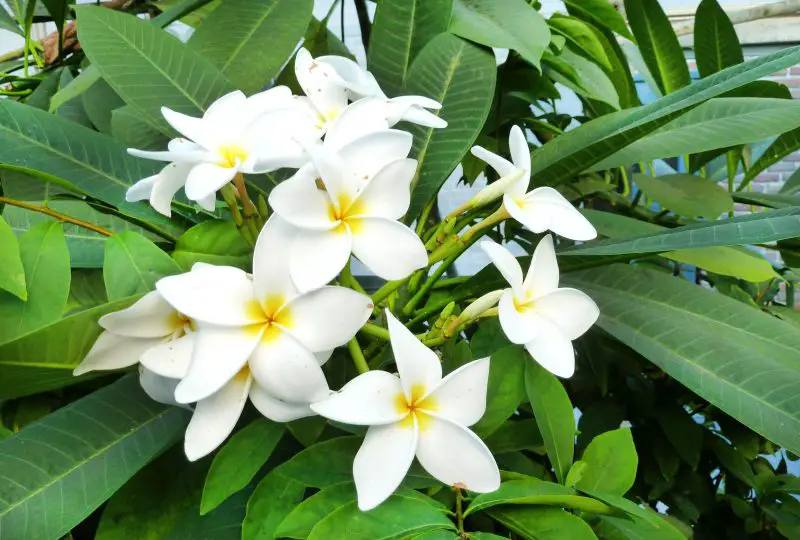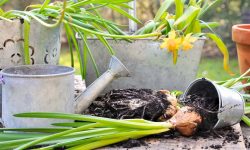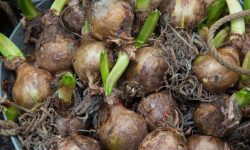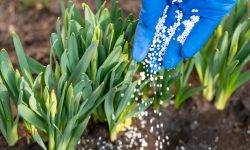Plumeria, often called the “Hawaiian lei flower,” is admired for its sweet fragrance, tropical charm, and stunning blooms. Yet one of the most common questions gardeners face is how often to water it. Too little water causes shriveled leaves and weak growth, while too much can quickly lead to root rot. Finding the perfect balance is key to growing plumeria that flourishes with bright, abundant flowers and lush, healthy foliage.
Understanding plumeria’s watering needs requires knowing its rhythm of growth and rest. This sun-loving plant thrives in warm climates and well-draining soil but has distinct hydration demands depending on the season. Whether grown in pots, gardens, or indoors, each environment affects how water moves through the soil. In this guide, you’ll discover when, how, and how often to water plumeria — ensuring consistent growth, stronger roots, and radiant blooms year after year.
Understanding Plumeria’s Water Needs

Plumeria is a tropical and subtropical plant that thrives in warmth and sunlight but dislikes soggy roots. Understanding its water needs begins with recognizing how it grows. During the active growing season—typically from spring to early fall—plumeria requires consistent moisture to fuel new leaves, branches, and flower clusters. The roots actively absorb water during this phase, supporting lush foliage and bloom production. However, the soil must drain freely, as standing water suffocates roots and promotes rot. For healthy growth, water should reach deep into the root zone and then be allowed to dry slightly before the next watering.
The plant’s natural environment offers clues. In its native regions, such as Hawaii, the Caribbean, and Southeast Asia, plumeria grows in sandy or volcanic soil that dries quickly after rain. These conditions create a cycle of wet and dry periods that plumeria is adapted to handle. Overwatering disrupts this balance, drowning roots and reducing oxygen in the soil. On the other hand, underwatering stresses the plant, leading to wilted leaves, early leaf drop, and reduced flowering. Maintaining equilibrium means mimicking its native rhythm — thorough watering followed by sufficient drying time.
Plumeria’s water needs also change with temperature, humidity, and sunlight exposure. In hot, dry climates, more frequent watering may be necessary, while in cooler or humid regions, the soil stays moist longer. Container-grown plumeria dries out faster than in-ground plants due to limited soil volume. Learning to adjust watering based on environment and growth stage ensures stronger roots and more vibrant, enduring blooms throughout the growing season.
Best Watering Tools and Techniques for Plumeria
Proper watering tools and techniques can make a huge difference in maintaining healthy plumeria. Using the right equipment ensures water penetrates deeply without wasting it. A watering can with a long, narrow spout or a hose with a soft shower nozzle provides gentle, even distribution. This allows water to reach the root zone directly while keeping leaves and flowers dry, minimizing the risk of fungal spots. For large gardens, soaker hoses or drip irrigation systems are ideal because they deliver moisture slowly and steadily, promoting deep root absorption without surface runoff.
Technique matters just as much as timing. Always water at the soil level, never over the leaves, especially during humid weather. Applying water slowly encourages even absorption through the root zone and prevents soil erosion. In pots, water until it drains freely from the bottom, but empty saucers afterward to prevent stagnation. For in-ground plumeria, water deeply around the drip line rather than near the trunk, where roots are less active.
Smart watering technology can make the process even easier. Moisture meters and self-watering systems help monitor soil conditions precisely, reducing guesswork. In hot or windy environments, covering soil with mulch prevents evaporation and maintains even hydration. Combining efficient tools with mindful watering techniques ensures plumeria stays hydrated, oxygenated, and consistently radiant — even through challenging weather.
How Often to Water Plumeria in Different Seasons
Spring: Awakening and Early Growth
Spring is when plumeria wakes up from dormancy and begins active growth. As temperatures rise, new leaves and shoots appear, signaling that it’s time to resume watering. Start lightly, watering about once every 7 to 10 days depending on soil dryness and temperature. Check the top two inches of soil — if it feels dry, water thoroughly until moisture drains from the bottom. Avoid watering too soon, as roots are still fragile and susceptible to rot. Consistency is more important than volume at this stage.
As the season progresses, increase watering frequency to twice weekly, especially in sunny or windy locations. Potted plumeria dries faster and may require an extra watering day. Observe leaf color and texture — firm, glossy leaves indicate proper hydration, while limp or dull ones show dryness. Morning watering allows better absorption before midday heat. A regular watering rhythm helps plumeria regain strength, promoting sturdy branches, healthy foliage, and the foundation for brilliant summer blooms.
Summer: Peak Blooming and Heavy Growth
Summer is plumeria’s most demanding season. Under bright sunlight and high temperatures, it grows vigorously and produces abundant flowers. During this period, watering every two to three days—or even daily in extreme heat—is often necessary. Each watering should be deep, saturating the soil until water flows freely from the bottom. Shallow watering weakens roots, while overwatering suffocates them. Allow soil to dry slightly between cycles for best results.
Container-grown plumeria dries faster than in-ground plants, especially in full sun or windy areas. Check soil moisture daily by pressing your finger one inch below the surface; if dry, water immediately. Early morning watering keeps leaves hydrated and reduces stress before afternoon heat peaks. Adding mulch around the base helps retain moisture and stabilize temperature. Balanced, deep watering ensures strong stems, glossy leaves, and continuous blooming all summer long, keeping your plant vigorous, lush, and full of radiant color.
Fall: Transition and Energy Storage
As fall arrives, plumeria begins to slow its growth and prepare for rest. Leaves gradually yellow and drop as the plant shifts energy back into its thick branches and roots. During this transition, reduce watering to once every 10 to 14 days. Let the soil dry between waterings but avoid allowing it to crack or harden. The plant’s water needs drop significantly, but total dryness can still stress roots. Check moisture depth before watering — slightly damp soil is ideal.
For potted plumeria, ensure drainage holes remain open to prevent stagnant water. Stop fertilizing entirely in fall, allowing the plant to focus on internal nutrient storage. If you live in a region with heavy rains, move containers to covered areas to prevent overwatering. When nights cool below 60°F (15°C), water sparingly, only enough to prevent shriveling. Gradual reduction of watering helps the plant enter dormancy naturally, ensuring stronger roots and better recovery next spring.
Winter: Dormancy and Minimal Watering
Winter is the plumeria’s true rest period. With its leaves gone, the plant conserves energy and requires minimal water. During this time, water only once every three to four weeks, just enough to keep the soil slightly moist. For most climates, this means a very light watering that barely dampens the top few inches. Avoid deep watering — inactive roots cannot absorb moisture effectively and will rot in saturated soil.
If growing plumeria in pots, check moisture monthly by feeling the soil about two inches deep. If it’s bone dry, add a small amount of water to prevent desiccation. In cooler areas, move plants indoors or under cover to protect from frost. Never water if the soil feels cold or wet. Overwatering during winter dormancy is the most common reason for root failure. Keeping the soil nearly dry and temperatures stable ensures your plumeria survives winter healthy and ready for spring revival.
Factors That Affect How Often to Water Plumeria
Soil Type and Drainage Quality
Soil composition is one of the most critical factors in determining how often to water plumeria. This plant thrives best in well-draining, loose soil that allows excess water to escape quickly. Sandy or loamy soils are ideal, as they prevent the roots from sitting in water and rotting. In heavy clay soil, drainage becomes restricted, keeping the roots constantly wet and cutting off oxygen flow. Such conditions can easily cause yellowing leaves and fungal problems. To improve drainage, mix sand, pumice, or perlite into the soil before planting.
Soil texture also affects how often you need to water. Sandy soils dry quickly, requiring more frequent watering, while clay retains moisture longer, demanding less. Using raised beds or slightly sloped ground helps prevent water from pooling around the roots. If you grow plumeria in pots, always choose containers with multiple drainage holes. Healthy, airy soil structure not only prevents overwatering but also encourages stronger roots that anchor the plant and support abundant blooms.
Climate and Humidity
The surrounding climate heavily influences how frequently plumeria needs watering. In tropical or subtropical climates, plumeria thrives naturally with periodic rainfall, meaning less manual watering is required. However, in hot, arid regions, evaporation rates are higher, so the plant needs more frequent watering to compensate for moisture loss. Gardeners in desert-like areas may need to water every one to two days during peak summer heat. On the other hand, those in humid coastal zones should reduce watering to avoid fungal issues and soil oversaturation.
Seasonal humidity changes also play a role. During humid weather, soil remains moist longer, so overwatering can easily occur. The best practice is to monitor soil moisture before watering rather than sticking to a rigid schedule. Use your finger or a moisture meter to check the top few inches of soil — it should be dry before watering again. Adjusting your watering habits according to weather conditions ensures your plumeria receives consistent, healthy hydration without risking rot.
Container vs. In-Ground Planting
Whether plumeria grows in a container or in the ground dramatically affects watering frequency. Potted plumerias tend to dry out much faster due to limited soil volume and exposure to wind and sunlight on all sides. They may require watering every two to three days in summer or whenever the top layer of soil feels dry. Choosing a large container with proper drainage holes helps maintain balanced moisture while preventing stagnation. Using a well-draining potting mix with perlite or pumice ensures roots remain healthy and oxygenated.
In-ground plumerias, by contrast, benefit from surrounding soil insulation, which retains moisture for longer periods. Watering every three to five days during hot months is typically sufficient, though sandy soil may need more frequent care. Mulching around the plant base helps regulate temperature and prevent rapid evaporation. Gardeners must also consider root depth — deeper roots can access moisture longer, requiring less frequent watering. Understanding these differences allows precise control over hydration, keeping plumeria strong, stable, and beautifully blooming in every environment.
Signs of Overwatering and Underwatering in Plumeria
Watering plumeria may seem simple, but both overwatering and underwatering can lead to serious damage. Overwatering is the most common mistake among gardeners. When roots remain wet for too long, oxygen flow stops, causing rot and fungal infections. The first signs of overwatering are yellow leaves, soft stems, and a musty odor from the soil. Leaves may appear droopy even though the soil is wet, confusing many gardeners into watering even more. In severe cases, black or mushy roots develop, leading to plant collapse. Once root rot sets in, it becomes difficult to reverse without pruning away affected areas and repotting into fresh, dry soil.
Underwatering, on the other hand, makes the plant appear dry and brittle. The leaves curl, wrinkle, and may develop brown edges. In extreme dryness, plumeria will shed its leaves early to conserve moisture, leaving bare stems. The soil feels hard and pulls away from the pot’s edges, making it difficult for water to penetrate. Unlike overwatering, underwatered plumeria often revives quickly once proper hydration resumes. However, long periods of neglect can cause permanent root damage or flower loss. Regular observation helps you catch early signs before they worsen.
A healthy plumeria shows glossy, upright leaves and firm stems. The key to maintaining this balance is learning your plant’s rhythm — watering deeply, then allowing the soil to dry slightly before the next cycle. Always adjust based on season, soil type, and environment. When moisture levels are right, plumeria rewards you with strong growth, resilient roots, and a brilliant canopy of fragrant flowers.
How to Water Plumeria the Right Way
Watering plumeria correctly is all about consistency, timing, and technique. The goal is to provide enough moisture to nourish the roots without letting the soil stay soggy. When watering, always soak the soil thoroughly until water flows from the pot’s drainage holes or seeps deeply into the garden bed. This ensures that roots at the bottom also receive moisture, encouraging them to grow downward for stability. Avoid giving small, frequent sips of water, as this promotes shallow root systems that dry quickly and weaken the plant over time. A deep, even watering pattern results in stronger, more resilient plumeria growth.
Morning is the best time to water, allowing leaves and stems to dry before cooler evening air arrives. This practice helps prevent fungal diseases and leaf spots that thrive in humid, wet conditions. In extremely hot climates, early watering keeps the plant hydrated through midday heat stress. The quality of the water also matters — plumeria prefers neutral to slightly acidic water, free of salts or chlorine. If using tap water, allow it to sit for 24 hours before use so chemicals can dissipate.
Before watering, always check soil moisture manually or with a probe. The top two inches should feel dry but not dusty. If the soil clings slightly to your fingers, the moisture level is perfect. In containers, plumeria dries faster due to limited soil volume, while in-ground plants retain moisture longer. Adjust your schedule accordingly and stay attentive to leaf signals — yellowing suggests excess water, while drooping indicates thirst. Consistent, deep watering and keen observation ensure glossy leaves, strong stems, and an abundance of stunning, fragrant blooms all season long.
Common Watering Mistakes and How to Fix Them
Overwatering and Root Rot
Overwatering remains the number one cause of plumeria decline. Many gardeners believe frequent watering helps growth, but plumeria’s succulent-like stems already store moisture. When roots stay wet for too long, oxygen is replaced by stagnant water, suffocating root tissues. Yellowing leaves, drooping stems, and a sour, earthy smell from the pot are early warnings. If unchecked, the plant’s lower stems soften, and rot spreads quickly upward. In extreme cases, the trunk may collapse entirely.
To fix overwatering, carefully remove the plant from its pot and inspect the roots. Trim all mushy, black, or foul-smelling sections using sterile shears. Let the roots air-dry for two or three days in indirect light. Replant in well-draining soil containing perlite, sand, or pumice. Avoid watering for a week, then resume with light, infrequent watering. Always empty saucers beneath pots to prevent reabsorption. Long-term prevention includes using breathable terracotta pots and checking soil moisture before each watering.
Underwatering and Leaf Stress
Underwatering stresses plumeria just as severely as too much water. When deprived of moisture, the plant redirects energy from blooming to survival. Leaves may curl, wrinkle, or show crisp brown edges. Soil becomes compacted and dusty, pulling away from the container sides, and roots shrink from dehydration. Extended dryness leads to premature leaf drop, halting flower production completely. The plant enters survival mode, pausing all visible growth until moisture returns.
To fix underwatering, water gradually instead of flooding the dry soil. Pour small amounts at a time to allow the soil to reabsorb moisture evenly. Repeat until water drains from the bottom. Continue monitoring every few days by pressing your finger into the soil. If it feels dry an inch below the surface, it’s time to water again. Applying a layer of organic mulch around garden plumeria slows evaporation. During extremely hot weeks, mist leaves lightly in the early morning to prevent excessive water loss. With consistent care, the plant quickly regains vigor, producing healthy green foliage again.
Inconsistent Watering Habits
Inconsistent watering — alternating between overwatering and drought — is one of the most overlooked mistakes. Plumeria thrives on rhythm, not randomness. Irregular watering confuses the plant, causing roots to expand and contract too quickly. This stress weakens their structure and limits water absorption efficiency. You may notice uneven leaf size, yellowing edges, or patchy bloom patterns. Such fluctuation also invites fungal problems because wet-dry cycles promote unstable root conditions.
To fix inconsistency, establish a steady routine guided by soil moisture rather than a fixed schedule. Use your finger or a digital moisture meter to gauge when watering is necessary. For outdoor plumeria, adapt your routine to the weather — increase frequency during heatwaves and reduce it during rain. In containers, ensure even drying by rotating pots occasionally so sunlight hits all sides. Choose well-draining mixes and breathable pots that prevent trapped moisture. Over time, consistent watering strengthens roots, stabilizes growth, and restores balance, allowing your plumeria to bloom beautifully and reliably year after year.
How to Adjust Watering for Different Plumeria Varieties
Not all plumeria varieties share the same watering needs. Some species, especially tropical types like Plumeria rubra, demand more frequent watering due to their rapid growth and large leaves that lose moisture faster. These vibrant varieties flourish with deep watering every two to three days during summer, especially in full sun. However, their roots are highly sensitive to stagnant water, so ensuring quick drainage is essential. Using sandy or volcanic soil mimics their native habitat, preventing soggy conditions while maintaining even moisture. Regular checks of soil dryness help balance hydration and airflow around the roots.
Dwarf plumeria varieties, such as Plumeria obtusa dwarf or compact hybrids, require a slightly lighter watering schedule. Their smaller root systems and denser foliage retain moisture longer, allowing longer intervals between watering—typically once every four to five days in warm weather. Since these plants often grow in smaller pots, the topsoil may dry quickly, but the deeper layer stays moist. Testing moisture below the surface ensures you don’t overcompensate. Moderate, deep watering encourages stable root expansion without stressing the compact structure.
Container-grown plumerias, regardless of variety, generally need more attention than those planted in the ground. Pots heat up and dry out faster, especially in full sun or windy locations. Terracotta pots are ideal because they allow moisture to evaporate naturally, preventing waterlogging. Always water until it drains freely from the bottom, then wait until the top two inches of soil are dry before the next session. Adjusting watering habits based on variety, size, and environment guarantees healthier roots and abundant, long-lasting flowers throughout the season.
How Climate and Location Impact Plumeria Watering Needs
Climate plays one of the most important roles in determining how often plumeria needs water. In tropical regions, natural rainfall often provides sufficient moisture, so supplemental watering is minimal except during dry spells. However, in arid or desert-like environments, high evaporation rates quickly deplete soil moisture. In these areas, deep watering every two to three days during summer helps maintain consistent hydration. Coastal regions with high humidity require less frequent watering, as moisture lingers longer in both the air and soil. Recognizing these differences prevents both drought stress and root suffocation.
Location also influences water behavior. Plumerias planted in open, windy areas lose moisture faster due to increased evaporation and airflow. Those grown near walls or reflective surfaces experience higher heat, which further accelerates drying. Gardeners can offset this by using mulch or shade cloth to regulate soil temperature. Conversely, plumeria planted in shaded spots or partially covered patios retain moisture longer, so watering should be reduced to avoid oversaturation.
Altitude and soil composition add another layer of complexity. High-altitude gardens tend to cool quickly, reducing water evaporation, while lowland tropical areas hold heat and require more frequent watering. Gardeners should always adjust based on their local climate, not a universal schedule. Observing the plant’s behavior—leaf color, turgidity, and soil moisture depth—is the best indicator of when to water. By aligning your watering practices with regional conditions, plumeria will flourish year-round with lush foliage and vibrant, aromatic blooms.
FAQs About Watering Plumeria
How often should I water my plumeria during summer?
During summer, plumeria needs watering every two to three days, depending on heat and soil type. Always water deeply until it drains from the bottom, then let the top two inches dry before watering again. In extremely hot or windy weather, potted plumeria may need daily watering to stay hydrated.
Can plumeria recover from overwatering?
Yes, plumeria can recover from overwatering if caught early. Remove the plant from wet soil, trim rotted roots, and let it dry for several days. Replant in well-draining soil with perlite or sand. Resume watering lightly after a week, allowing roots to reestablish before normal care continues.
How can I tell if my plumeria needs water?
Check the soil about two inches below the surface. If it feels completely dry, it’s time to water. Plumeria leaves also give clues — drooping, dull, or wrinkled leaves indicate thirst, while yellowing suggests too much water. Observing both soil and foliage keeps your watering accurate and balanced.
Should I water plumeria during winter dormancy?
Watering should be minimal during dormancy. Once leaves fall, reduce watering to once every three to four weeks, or skip entirely in cold, humid conditions. The goal is to keep roots slightly moist but never wet. Overwatering in winter often leads to root rot and weak spring growth.
Is rainwater better than tap water for plumeria?
Yes, rainwater is ideal for plumeria because it’s naturally soft and free from chemicals like chlorine and fluoride found in tap water. If you must use tap water, let it sit overnight to allow gases to dissipate. Clean, neutral water helps maintain soil health and promotes stronger root development.
Conclusion: Mastering the Art of Watering Plumeria
Mastering how to water plumeria is the key to unlocking its tropical beauty. Understanding the balance between soil, climate, and timing ensures vibrant blooms and healthy roots year after year. Each drop of water should serve a purpose — to refresh, not drown. With careful observation and consistent care, your plumeria will reward you with glossy leaves and fragrant blossoms that brighten every corner of your garden, season after season. Perfect watering isn’t about routine; it’s about harmony with nature’s rhythm.






